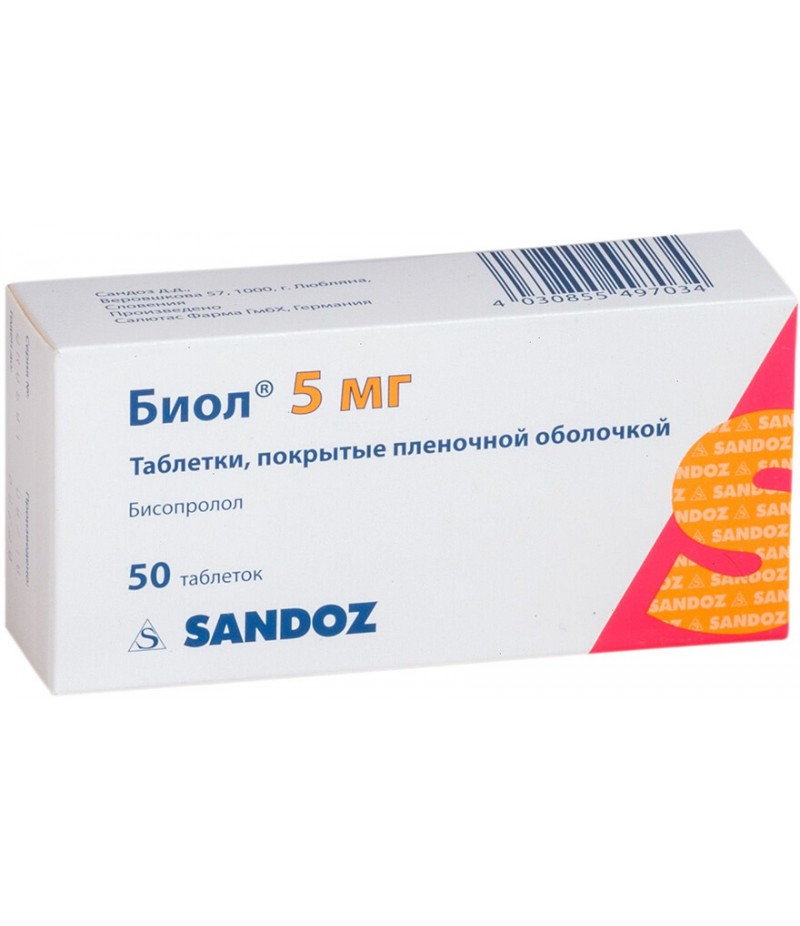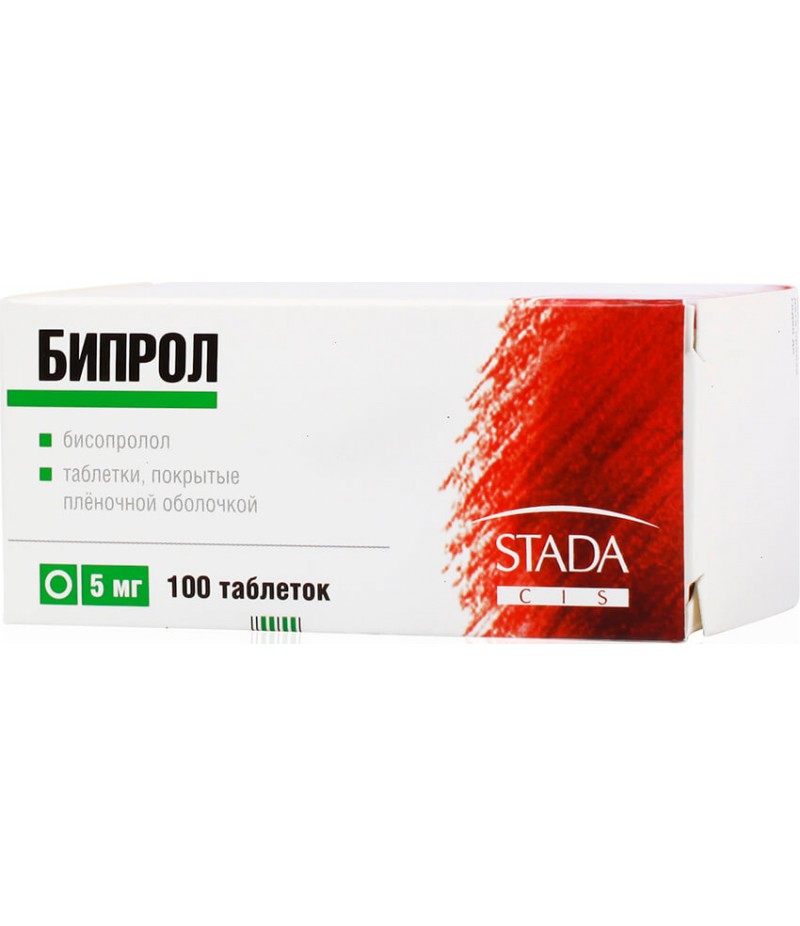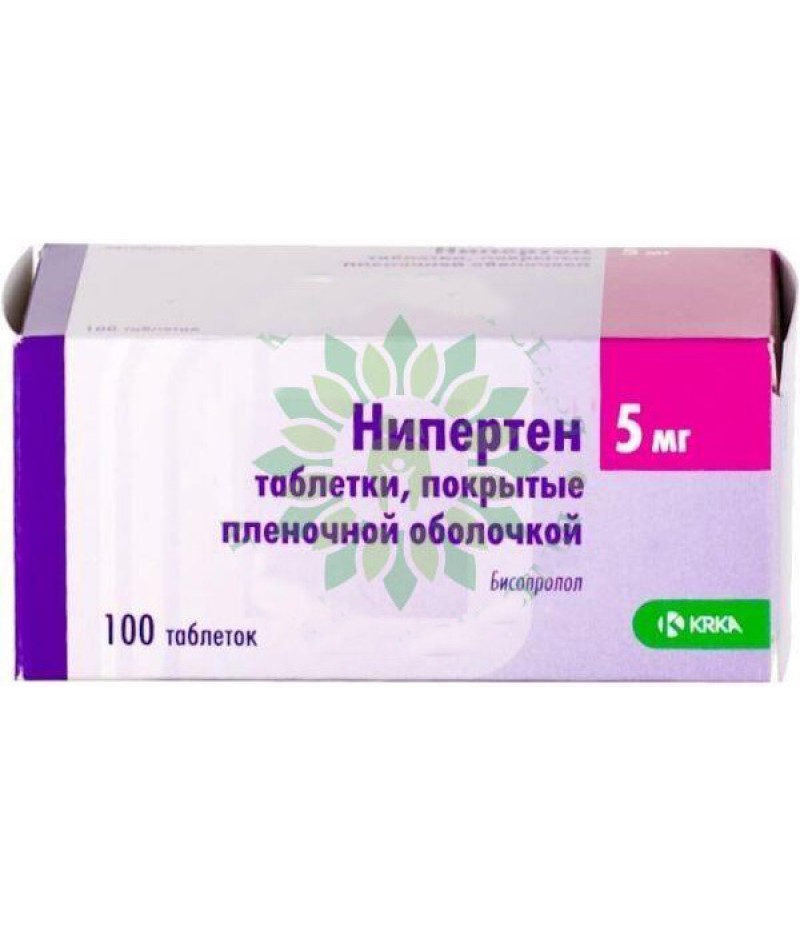Byol tabs 5mg #50
- $15.38
- 3 or more $14.99
- Availability:In Stock
Tablets Byol user manualReed more and buy Byol on this pageCompositionOne tablet may contain 2.5 mg, 5 mg or 10 mg of bisoprolol hemifumarate.Auxiliary compounds are: microcrystalline cellulose, calcium hydrogenphosphate, corn sta..
Tags: tabs
Tablets Byol user manual
Reed more and buy Byol on this page
Composition
One tablet may contain 2.5 mg, 5 mg or 10 mg of bisoprolol hemifumarate.
Auxiliary compounds are: microcrystalline cellulose, calcium hydrogenphosphate, corn starch, croscarmellose sodium, magnesium stearate and colloidal anhydrous silica.
The film membrane of the tablets is made of lactose monohydrate, hypromellose, titanium dioxide, macrogol 4000.
As the dye used: yellow and red iron (III) oxide (for a dosage of 10 mg).
Form of issue
The tablets are coated in the form of a film membrane, they are sealed in blisters of 10 tab. In one carton can be 3, 5, 10 blisters.
Engraving "BIS 5" means a dosage of the drug - 5 mg, the tablets also differ in light yellow color, round, biconvex shape and cross-like risk.
Tablets dosage 10 mg yellow and marked by engraving "BIS 10".
pharmachologic effect
Selective β1-adrenergic blocking, antianginal and hypotensive.
Pharmacodynamics and pharmacokinetics
Bisoprolol refers to selective β1-adrenoblockers that do not have sympathomimetic activity and membrane-stabilizing action. The mechanism of action of the active compound in the treatment of hypertension has not yet been elucidated. However, bisoprolol in the bloodstream reduces the activity of the proteolytic enzyme - renin, reduces the need for cardiac muscle in oxygen and heart rate, has antihypertensive, antiarrhythmic and antianginal effects.
Low doses of the drug lead to the blocking of β1-adrenoreceptors of the heart, which inhibits the conversion of cyclic AMP from ATP stimulated by catecholamines, which reduces the intracellular current of calcium ions, inhibits the work of the heart, reducing its excitability and atrioventricular conductivity. Taking a larger therapeutic dose of the drug causes a β2-adrenergic blocking effect. Owing to the reciprocal increase in α-adrenergic receptor activity and the elimination of β2-adrenergic receptor stimulation, the level of total resistance of peripheral vessels increases on the first day of therapy, and then returns to the initial one after 2-3 days, and decreases with prolonged use.
The antihypertensive effect of bisoprolol is associated with a decrease in such a parameter as the minute volume of blood, as well as with sympathetic stimulation of the vessels at the periphery, with a decrease in activity of the sympathoadrenal system and the restoration of the ability to respond to a decrease in blood pressure. In patients with hypertension, the effect develops on the 2nd-5th day of therapy, to achieve a stable effect, 1-2 months is necessary.
The antianginal effect of the drug is provided by a reduction in the need for cardiac muscle in oxygen: not only reduces contractility, but also other functions of the myocardium, diastole lengthens and myocardial perfusion improves. Increasing the resulting diastolic pressure in the left ventricular chamber and increasing the tension may increase the need for muscle fibers in oxygen, especially in chronic heart failure (CHF).
Byol in the average therapeutic doses has a less pronounced effect on organs with β2-adrenoreceptors and carbohydrate metabolism in contrast to non-selective β-blockers.
Pharmacokinetics of bisoprolol
After oral ingestion, absorption from the gastrointestinal tract occurs almost completely - approximately 90% regardless of nutrition. To achieve the maximum concentration in the blood stream, it takes from 2 to 4 hours. The active compound binds to plasma proteins in the blood at 26-33%. After the transformation in the liver, metabolites are formed that do not have pharmacological activity. The half-life is 9-12 hours, so Byol can be taken once a day.
Excretion by the kidneys - up to 50% of unchanged substance, 2% is eliminated through the intestine.
Bisoprolol has a low permeability through the blood-brain and placental barriers, in small amounts is excreted together with milk.
Indications for use
monotherapy of arterial hypertension;
as a component of combined therapy for chronic heart failure (CHF);
prevention of attacks of stable angina pectoris.
Contraindications
hypersensitivity to constituents or other β-blockers;
acute or chronic cardiac insufficiency, incl. At the stage of decompensation, which requires inotropic support;
metabolic acidosis;
collapse;
therapy with MAO inhibitors and 14 days after cancellation (the risk of a significant increase in the hypotensive effect);
cardiomegaly;
cardiogenic shock;
Raynaud's syndrome;
sinoatrial, AV-blockade partial (grade II) or complete, without the use of a pacemaker;
dysfunction of the sinus node;
bradycardia (at a heart rate of up to 50 beats per 1 minute);
arterial hypotension with sist.AD up to 90 mm Hg. p.
severe form of bronchial asthma or chronic obstructive pulmonary disease, and the presence of a history;
violations of peripheral circulation;
pheochromocytoma;
the administration of floktaphenin or sultopride;
age category: persons under the age of 18;
breastfeeding or pregnant women.
Use with caution:
combination with desensitizing therapy;
hyperthyroidism;
psoriasis;
type 1 diabetes mellitus or significant fluctuations in glucose levels;
Kidney failure in creatinine clearance less than 20 ml per 1 min;
marked violations of the liver;
partial AV blockade of the 1st degree;
restrictive cardiomyopathy;
angina of Prinzmetal;
congenital heart disease or heart valve, accompanied by hemodynamic disorders;
chronic heart failure, recent myocardial infarction (up to 3 months);
depression or records about it in the anamnesis;
with pheochromocytoma and complex treatment with α-blockers;
strict diet.
Side effects
Byol tablets can cause unwanted reactions, the frequency of occurrence and manifestation of them differ:
From the side of the cardiovascular system very often (in ≤10% of patients) there is a decrease in heart rate and the development of bradycardia, a feeling of palpitations; in less than 1% of patients "often" there was a decrease in blood pressure, angiospasm, paresthesia, infrequently (≤0,1%) - violations of AV-conduction, blockade and cardiac arrest, arrhythmia, orthostatic hypotension, worsening of CHF, peripheral edema and chest pains .
"Frequent" adverse reactions of the nervous system and sensory organs: dizziness, headaches, asthenia, fatigue, anxiety sleep disturbance, depression, cases (≤0.01%) of confusion, short-term memory loss, nightmares, hallucinations, myasthenia, tremor , seizures, visual impairment, reduced tear and dryness (it is important to consider when using lenses), noise, ear pain and hearing loss, conjunctivitis are possible.
Infrequent bronchospasm develops on the background of bronchial asthma or COPD; rarely there is an allergic rhinitis.
Often there may be nausea, vomiting, constipation or diarrhea, dry mouth, hepatitis, increased activity of ALT and AST, bilirubin concentrations, rarely triglycerides.
There are infrequent cases of arthralgia and back pain.
Very rarely patients complain of a violation of potency and a weakening of the libido.
There were isolated reports of thrombocytopenia, agranulocytosis, and leukopenia.
Rare allergic reactions manifested in the form of skin itching, rash and urticaria.
On the side of the epidermis, sweating rarely increased, there was hyperemia, exanthema, psoriasis-like reactions; even less often - alopecia, exacerbation of psoriasis.
After discontinuation of the Byol tablets, withdrawal syndrome occurs, which leads to an increase in angina attacks and an increase in blood pressure.
Byol tablets, instructions for use (method and dosage)
Pills Byol should be taken orally, in the morning, before the reception or during breakfast, wholly, with a small amount of water, once every 24 hours.
The instructions for use describe standard treatment regimens, but in each case the attending physician should select therapeutic regimens taking into account the heart rate and the patient's condition.
With arterial hypertension and ischemic heart disease:
The daily dose is 5 mg, but can be increased to 10 mg.
Patients suffering from hypertension and angina are prescribed at least 20 mg per day.
When CHF:
The minimum initial dose is 1.25 mg, which can be increased after drug tolerance analysis - first up to 2.5 mg, then to 3.75 mg, 5 mg, 7.5 mg and maximum after 2 weeks. - 10 mg. If therapy calls for worsening, then it is better to consider a dose reduction option.
The choice of dosage requires regular monitoring of blood pressure and heart rate. With aggravation of symptoms of CHF, arterial hypotension or bradycardia, first of all, standard doses of concomitant therapy and reduction of Byol doses, up to the withdrawal of treatment, are necessary.
Overdose
It manifests itself in the form of such symptoms as:
arrhythmia;
severe bradycardia;
AV blockade;
ventricular extrasystole;
a decrease in blood pressure;
labored breathing;
bronchospasm;
development of acute heart failure, hypoglycemia, acrocyanosis;
dizziness, fainting and convulsions.
First aid and symptomatic treatment
gastric lavage and intake of adsorbing agents;
the expressed bradycardia is eliminated by intravenous injection of Atropine or, if necessary, a drug with a positive chronotropic effect;
temporarily install an artificial pacemaker;
a pronounced decrease in blood pressure can be corrected by IV injection of plasma-substituting drugs and vasopressors;
hypoglycemia requires iv administration of glucagon or dextrose;
exacerbation of CHF - in / in diuretics, possibly - vasodilators;
at AV blockade, β-adrenomimetics are prescribed, eg, Epinephrine;
When bronchospasm occurs, bronchodilators are used, incl. β-adrenomimetics and / or Aminophylline.
Interaction
With antiarrhythmic drugs of the first class (for example, with quinidine, dysopyramide, lidocaine, phenytoin, flecainide, propafenone), AV conduction and contractility of the myocardium can decrease.
With antiarrhythmic drugs of the third class (for example, Amiodarone), the disturbance of atrioventricular conduction increases.
With beta-adrenoblokatorami local action (for example, with eye drops for the treatment of glaucoma), the systemic effects of the drug Byol.
In combination with parasympatomimetics, AV conduction disorders increase and the risk of bradycardia increases.
With β-adrenomimetics (to admission, with Isoprenaline or Dobutamine), the effect of both drugs may decrease.
With norepinephrine and epinephrine, the vasoconstrictor effect may increase and an increase in blood pressure may occur.
Meflohin increases the likelihood of bradycardia.
With the allergens and their extracts used for immunotherapy and skin tests, the probability of systemic and severe allergic reactions and anaphylaxis increases.
With iodine-containing radiopaque agents used in diagnosis, the likelihood of anaphylactic reactions increases.
With phenytoin in / in the injected means of inhalation anesthesia, the cardiodepressant effect increases and the probability of lowering blood pressure increases.
Byol will change the effectiveness of insulin, hypoglycemic agents, masking symptoms of hypoglycemia, such as: tachycardia and increased blood pressure; the clearance of lidocaine and xanthines decreases (exception: Theophylline).
With NSAIDs, GCS and estrogen, the hypotensive effect is weakened.
Combination with cardiac glycosides, methyldopa, reserpine and guanfacin, BCCC (verapamil, diltiazem), amiodarone and other antiarrhythmic drugs can provoke aggravation or occurrence of bradycardia, atrioventricular blockade and even cause cardiac arrest.
With Nifedipine there is a significant reduction in blood pressure.
With diuretics, clonidine, sympatholytics, hydralazine, an excessive decrease in blood pressure can occur, and the effect of nondepolarizing muscle relaxants and the anticoagulant effect of coumarins - increase.
With antidepressants, antipsychotic drugs (neuroleptics), ethanol, sedatives and hypnotics, CNS depression is increasing.
With unhydrogenated ergot alkaloids and Ergothamine, the risk of circulatory disturbances at the periphery is increased.
The concentration of plasma bisoprolol in the bloodstream increases with sulfasalazine.
With Rifampicin, T1 / 2 bisoprolol is shortened.
Terms of sale
To buy Byol the prescription is not needed.
Storage conditions
The ambient temperature should not exceed + 25 ° C.
Keep out of the reach of children and pets.
Shelf life - 48 months.
special instructions
If the planned surgical treatment is necessary, then the drug should be canceled at least 2 days before the upcoming general anesthesia or choose another drug that has a minimal negative inotropic effect.
Stop taking Byol also before blood or urine levels of such drugs, such as catecholamines, Normetanephrine, vanillinmendic acid, antinuclear antibody titers.
In patients with smokers, the effectiveness of β-blockers is reduced.
Reviews about Byol
Reviews about the drug are ambiguous, patients leave various comments on the forums and medical portals, among them:
"... I take the drug for 3 years, I really like it"
"... Helps, when there are unpleasant sensations in the chest area";
"... After the first dose, the heart began to beat too fast and even there was a sensation of noise in the ears."



